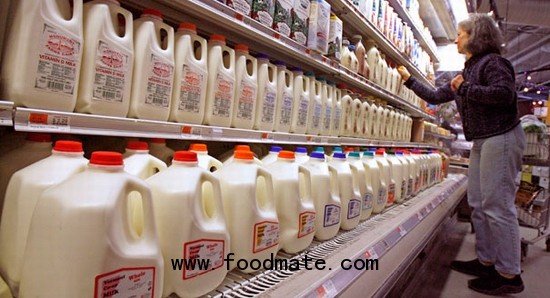
Unlike commodities such as corn and soybeans, carrots are not (yet) among the major beneficiary crops of taxpayer subsidies or government price controls. Yet they still figure prominently in federal agriculture policy; look no further than Washington’s latest proposed carrot-and-stick approach, one that Congress could very well enact in the post-election lame-duck session.
Since the Great Depression, the federal government has meddled with the market for milk in the name of “helping dairy farmers,” ranging from outright taxes to incentives for slaughtering cows. In 2002, Congress embarked on a manipulative system whereby the government artificially inflates milk prices by purchasing and warehousing items such as cheese and butter. It also concocted the Milk Income Loss Contract program, which pays dairy farmers directly every time the price of milk falls below what the government believes the market will bear in Boston, Massachusetts (!). According to the Congressional Research Service, in 2009 the federal government spent more than $1.3 billion to support the industry through the MILC program and other dairy support programs.
This year, lawmakers admitted that the complex web of direct payments and pricing cartels for dairy ought to be ended. But in true Washington fashion, they’re proposing to replace it all with something that’s little better — the Dairy Market Stabilization Program. Proponents of this scheme, which allows the feds to buy up “surplus” products, offer subsidized margin insurance against price drops and penalize participating farmers for overproducing, claim that this time, they’ve hit upon the right formula. Unfortunately, the mix is still toxic.
Most important, constricting supplies will squeeze consumers. In July, Consumer Action, Consumer Federation of America, Consumers Union and the National Consumers League sent a letter to House Agriculture Committee Chairman Frank Lucas (R-Okla.), opposing ploys like DMSP, correctly noting that “at a time when so many U.S. consumers are having difficulty making ends meet, the last thing they need are unnecessary, artificial increases in the price of staple food products.” The Congressional Research Service, while more neutral on the subject, nonetheless concluded the “concept behind the DMSP program is that payment reductions are intended to have one or both of two basic effects, either of which is expected to result in a higher future farm price for milk (emphasis added).”
It is all too logical that many Americans would suffer as a consequence. Milk is, after all, an ingredient in everything from the pizzas consumed while watching the big game, to the yogurt many Americans eat for their health. And for lower-income families, the choice would be much worse than hanging up the phone on the pizza man. Some would have to make do with less in their shopping carts.
Of equal concern to our two organizations is DMSP’s effect on taxpayers, which is why we created a website at www.yourmilkmoney.org to alert citizens to the scheme. For example, higher dairy prices will put increased pressure on federal nutrition programs such as food stamps (already at record-high participation levels) and federally subsidized school meals programs, which in 2011 cost taxpayers $13.2 billion.
Nor can we afford DMSP’s damage to the overall economy. Dairy manufacturers and their 200,000 employees depend on affordable milk supplies for the products they make, not only for Americans but for the rest of the world. Over the past four decades, U.S. milk production has risen by more than 60 percent, fueling exports and with it domestic job growth. Unimpeded, those trends could make a measurable contribution to the long-stalled economic recovery, which will be jeopardized by DMSP. To get some idea of the danger, Canada’s milk-quota system has flattened production, undermined farm and industry efficiency and impoverished consumers.
DMSP supporters cry foul over the Canada analogy, claiming the U.S. program will be voluntary and not involve quotas. But here again, in order to get the carrot of federally discounted insurance against noncatastrophic price drops, farmers have to accept the stick of supply management (which in Orwellian vernacular is called the “production base”).
Carrots and sticks don’t work too well with mules; they shouldn’t be inflicted on cows or people either. There are better near-term alternatives to DMSP, among them a scaled-down margin insurance plan offered by Reps. Bob Goodlatte (R-Va.) and David Scott (D-Ga.). Their plan would, according to the Congressional Budget Office, provide an extra $6 million a year in annual budget savings with less government interference.
Looking ahead, dairy policy should further embrace the free market by relying on private insurance, farm savings accounts and proven tools such as forward contracting to stabilize risk for farmers. But first, Americans must tell Congress to reject DMSP and save their milk money.





